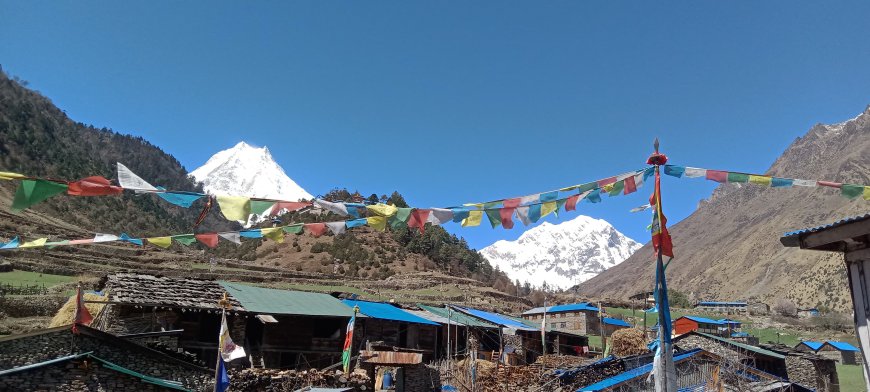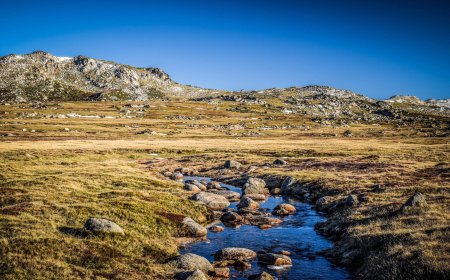How To Take Breaks To Avoid Drowning In Exhaustion in ABC
Learn how to avoid exhaustion on the Annapurna Base Camp trek with smart break strategies, hydration, proper pacing, and recovery tips to stay energized, safe, and fully enjoy your Himalayan journey.

How To Take Breaks To Avoid Drowning In Exhaustion in ABC
Trek to Annapurna Base Camp (ABC) is an amazing experience, but it takes some physical effort and a good pace to keep from getting too tired. One of the best ways to stay energized during your hike is to take regular breaks. These breaks let your body recharge, help keep fatigue at bay, and lower the chances of altitude sickness, which can get worse if you don’t take it easy.
It's important to listen to your body—stop when you feel worn out instead of waiting until you’re completely spent. Plan your trek with plenty of rest stops, especially after tough climbs. Even short breaks of five to ten minutes every hour can help you catch your breath, drink some water, and grab a quick snack. Use these times to soak in the beautiful views, stretch a bit, and get your breathing back on track. Don’t rush or skip breaks just to get to your next stop faster, since that can wear you out.
Stay hydrated during your breaks by sipping water or electrolyte drinks. Eating small, healthy snacks like nuts, energy bars, or fruits while you rest will help keep your energy up throughout the day. Good nutrition, along with rest, is key for muscle recovery and keeping your mind focused.
Lastly, don’t forget about getting a good night’s sleep. Choose cozy lodges or teahouses where you can relax and recharge. A solid night of sleep is crucial for your body to recover and get ready for the next day. Taking breaks seriously will make your Annapurna Base Camp trek safer and much more enjoyable, turning a tough challenge into a memorable adventure full of energy and fun.
Spotting Signs of Fatigue Early
It's important to pick up on the early signs of fatigue while trekking on the Annapurna Circuit to avoid getting too worn out. Things like feeling constantly tired, slowing down, getting short of breath, sore muscles, dizziness, or just feeling irritable all indicate that you might need a break. Catching these signs early means you can rest up and avoid hitting a wall or getting altitude sickness. Ignoring them can mess with your judgment and increase the chances of getting hurt. Check in with yourself and chat with your trekking buddies to keep track of how everyone’s feeling. Don’t forget about mental fatigue, too; if you're finding it hard to focus or get motivated, take that as a cue. Knowing when to slow down helps make the trek safer and more enjoyable.
Planning Regular Rest Stops
A good trekking plan includes scheduled breaks to help you keep your energy up along the Annapurna Circuit. Aim to rest every hour or after tough stretches to give yourself a chance to recover and avoid pushing too hard. It’s smart to plan these breaks rather than just waiting until you’re dead tired. Short breaks of about five to ten minutes are great for rehydrating, grabbing a quick snack, and stretching your legs. Longer stops at nice viewpoints or tea houses can lift your spirits and give you a mental boost. Taking regular breaks helps you last longer and lowers the chances of altitude sickness. Plus, having a plan for your stops helps you keep track of time so you can reach your lodging before it gets dark. Incorporating breaks keeps you safe and helps maintain your energy throughout the day.
Balancing Walking and Resting
Finding the right mix between walking and resting is crucial for a successful trek on Annapurna. If you walk too long without breaks, you'll likely feel worn out, but resting too much can stretch out your journey. A good approach is to walk for about 50 to 60 minutes and then take a quick 5 to 10-minute break. On tougher climbs, more frequent short breaks might be needed. Keeping a steady, moderate pace can help save your energy. Use your breaks for hydration, snacks, and to relax your muscles. Balancing your walking and resting intervals keeps you fueled and stops you from burning out. Pay attention to how you're feeling each day so you can adjust your pace and breaks accordingly, making the trek easier and more fun.
Finding Safe and Comfortable Rest Spots
Choosing safe and comfy places to rest on your Annapurna trek is key for recovery and safety. Look for flat areas away from steep or unstable ground to reduce the risk of slips or injuries. Tea houses or lodges are great for some shelter, warmth, and a chance to recharge physically and mentally. Stay clear of exposed spots that might be hit by harsh weather or strong winds. Finding places with nice views can help lift your spirits. Having proper seating or a place to lie down aids recovery, too. Keep altitude in mind when picking your rest spots; sometimes, going down a bit can make it easier to breathe. Safe and comfy rest areas play a big role in keeping your energy and motivation high during the trek.
Staying Hydrated
Making sure you drink enough water during breaks on the Annapurna trek is super important to keep your energy up and avoid altitude sickness. It's best to drink regularly, even if you don’t feel thirsty, since dehydration can sneak up on you at high altitudes. Electrolyte drinks can also help replace important salts lost through sweat. Try to limit caffeine and alcohol since they can dehydrate you. It’s better to sip small amounts often than chugging a lot all at once. Staying hydrated supports muscle function and helps keep everything working smoothly. Make sure to carry enough clean water or some purification tablets. Drinking during breaks helps keep you feeling good and ready for the next part of the trek.
Snacking for Energy on the Annapurna Trek
Eating energy-boosting snacks regularly while trekking in Annapurna can help keep your energy up and your focus sharp. Go for snacks that are high in carbs and protein, like nuts, dried fruits, energy bars, and chocolate. These give you a quick energy kick and help you stay energized for longer. It’s best to snack a little bit every hour to avoid those annoying energy slumps and to keep your blood sugar steady. Try to stay away from heavy or greasy foods that might make you feel sluggish. Look for snacks with natural sugars and salts to help replace lost electrolytes. Good nutrition is key for muscle recovery and staying mentally alert when you're hiking at high altitudes. Bring along snacks that are easy to munch on the go. Keeping up with regular snacks and staying hydrated ensures that you’re ready for the tough parts of the trail.
Breathing Techniques for Better Recovery
Taking deep breaths during your breaks can help you recover quicker on the Annapurna trek. Slow, deep breathing can increase the amount of oxygen you take in, help calm you down, and ease any shortness of breath you might feel from the altitude. Techniques like diaphragmatic breathing can help you get more air into your lungs and improve blood flow. These breathing exercises can also slow your heart rate and reduce muscle tension, which is great for relaxation. Practicing focused breathing can help you manage fatigue and anxiety, making it easier to think clearly when you need to. Try using these techniques while resting or even when you’re walking at a slower pace. Learning proper breathing helps you recover better and can boost your endurance, too.
Listening to Your Body
It’s really important to listen to your body and not push yourself too hard while trekking in Annapurna. If you overload yourself, you might face fatigue or altitude sickness. Be aware of signs like dizziness, headaches, breathlessness, or muscle pain—it’s your body saying it needs a break. Don’t feel pressured to keep up with others; it’s okay to slow down or take extra breaks when you need to. Overdoing it can leave you more vulnerable to injuries and can weaken your immune system. Taking care of your body by resting and pacing yourself makes for a better experience overall.
Stretching During Breaks
Doing a few quick stretches during your breaks on the Annapurna trek can help stop your muscles from getting stiff and sore. Simple stretches for your legs, back, and shoulders can boost blood flow and make you more flexible. Stretching can ease the tension that comes from walking long distances and carrying a heavy bag, which helps with muscle recovery and lowers the risk of injuries. Try to stretch the hamstrings, calves, quads, and lower back after about an hour of trekking or whenever you start feeling tight. Stretching can also improve your posture and balance, which is helpful on uneven trails. Keeping your muscles loose supports your endurance and comfort on the trail.
Adjusting Your Pace
Adjusting your walking speed each day on the Annapurna trek based on the weather, terrain, and how you're feeling is key to keeping your energy up. When the trail gets steep or slippery, take it slower to avoid injuries and save energy. If the weather is tough—like heavy rain or strong winds—be cautious to avoid burning yourself out or getting hurt. If you start to feel worn out or notice symptoms of altitude sickness, it’s smart to slow down or take more breaks. On the flip side, if you’re on an easy stretch and the weather’s nice, it’s fine to keep a steady pace to cover more ground. Being flexible with how fast you walk helps you manage your energy better and keeps you from feeling overwhelmed. Listening to your body and adjusting your pace makes the trek safer and more enjoyable, ensuring you finish comfortably.
How often should I take time off to avoid burnout?
To steer clear of burnout, make it a habit to take short breaks during your day—just a few minutes every hour can help. It's also a good idea to carve out longer breaks each day and plan some downtime weekly. Aim to take a few days off every month to recharge. Don't forget to use vacation days or take longer breaks every few months to keep from feeling worn out. Pay attention to how you're feeling, and prioritize rest before stress piles up.
How to prevent burnout?
To keep burnout at bay, find a balance between work and taking care of yourself. Set clear rules for when you work and when you're off, keep your workload realistic, and don’t take on too much. Make sure you're getting enough sleep, eating well, and staying active to support your overall health. Try stress-busting activities like mindfulness or hobbies that make you happy. Stay in touch with friends and coworkers who lift you, and don’t hesitate to ask for help if you’re feeling overwhelmed. Regular check-ins with yourself can help you spot burnout early, so you can make changes before it gets serious.
How to not burn out as a teacher?
To prevent burnout as a teacher, keep a good work-life balance by setting limits on your work hours and making room for downtime. Share tasks whenever you can and lean on your colleagues for support. Focus on what’s within your control and celebrate the small wins to stay inspired. Make self-care part of your routine, including exercise, hobbies, and time with friends. Remind yourself why you became a teacher to keep that passion alive. Getting involved in professional development and practicing mindfulness can also help ease stress. And don’t hesitate to take a mental health day if you need one.
What is the role of a trek guide in preventing burnout?
As a trek guide, prevent burnout by recognizing early signs like fatigue and irritability. Make the Annapurna Base Camp Trek Itinerary easy and comfortable. Take regular breaks, delegate tasks, and ask for help when needed. Stay hydrated, eat well, and get enough sleep. Practice mindfulness or breathing exercises to manage stress. Communicate openly with your group about your limits. Lastly, schedule downtime between trips to fully recover. Balancing work and rest keeps you energized and effective on the trail.










































